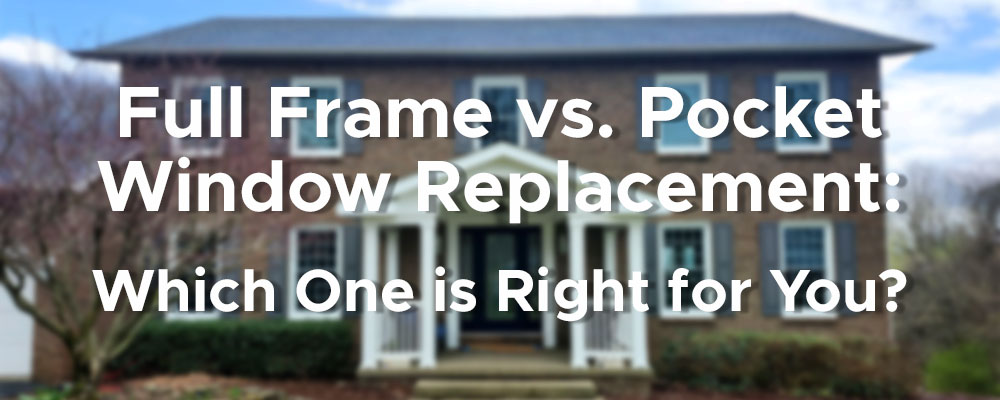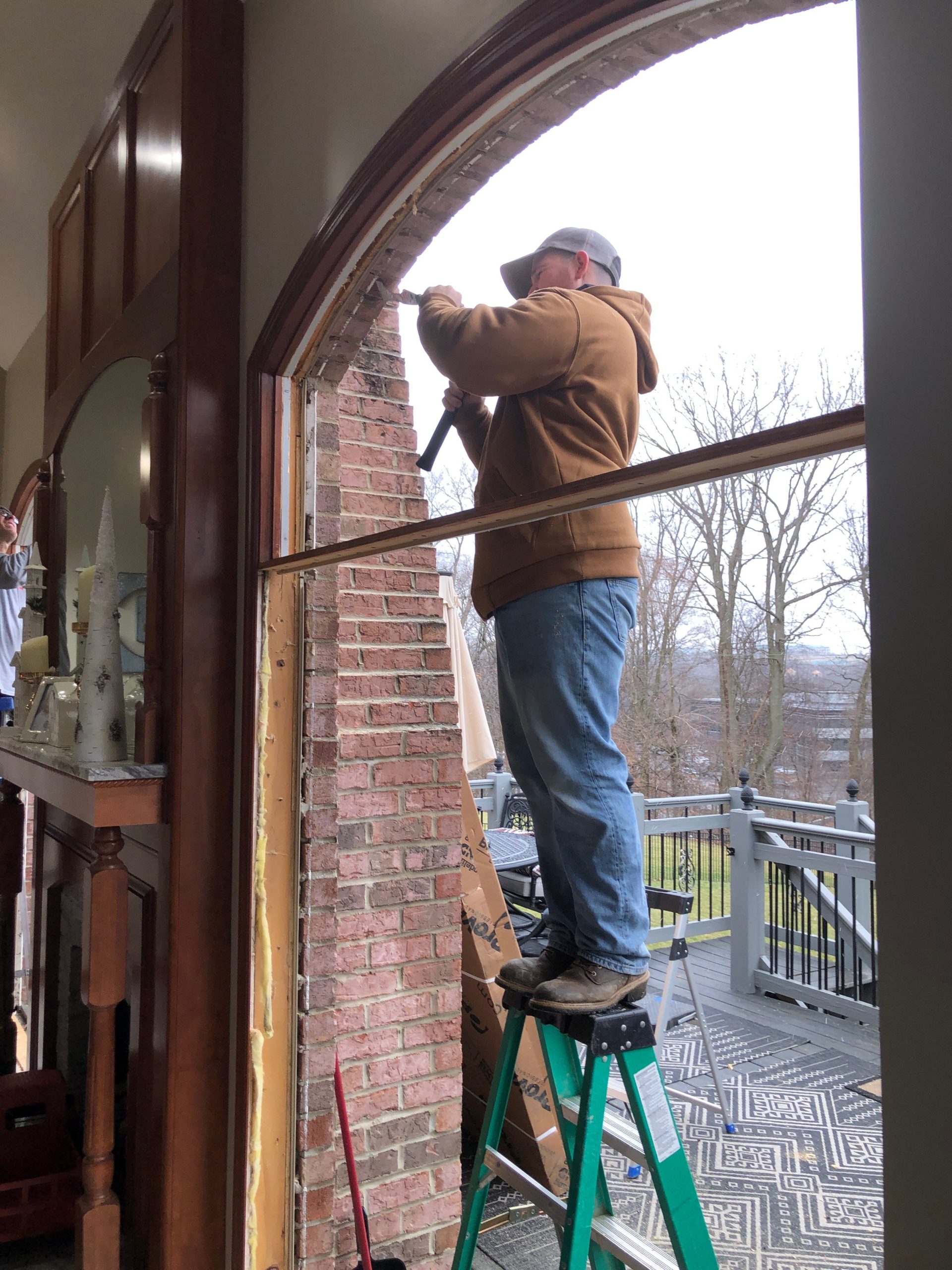A contractor might have told you that you only need pocket replacement windows, which probably made you even more confused than before the appointment. Understanding the difference between full-frame replacement and a pocket (insert) replacement can be difficult, especially when you aren't well-versed on replacement windows. Which, let’s be honest, most people aren't. The wrong choice could lead to unexpected costs, energy inefficiency, or even installation complications.
At Energy Swing Windows, we’ve helped thousands of Western PA homeowners navigate this decision and lead them to the best choice for this home.
To help you avoid costly mistakes, we’ll break down exactly what each type of replacement entails, the cost differences, energy efficiency considerations, and how to decide which option is best for your home.
Full Frame Window Replacement: What It Is and When Do You Need It?
Most aluminum and vinyl windows installed in Pittsburgh homes over the past 20 to 40 years require a full-frame replacement to ensure proper installation of a new, energy-efficient window.
In many cases, replacing a wood window with a new wood window also calls for a full-frame removal. Full frame replacement means removing your entire old window, including the frame and trim, and starting fresh with brand new materials. It allows for new framing, fresh insulation, and a complete window unit to be installed.
This method gives you a clean slate—ideal for maximizing efficiency and fixing any hidden issues behind the old frame, which is especially helpful in older Pittsburgh homes where drafty windows and outdated construction are common.
Top Benefits to Consider:
- Ideal for damaged or outdated frames: If your current window frames are deteriorating, rotting, or no longer energy-efficient, a full frame replacement ensures a fresh start.
- Increases energy efficiency: Since new insulation is added, it can improve energy performance and prevent air leaks.
- Allows for a new style or size: If you want to change the look, style, or size of your windows, this is the best option.
- Better long-term investment: While it may have a higher upfront cost, full frame replacements provide a more comprehensive solution.
What Are the Downsides?
- More expensive: Labor and material costs are higher due to the complexity of the installation.
- Longer installation time: Because the entire frame is removed and rebuilt, the process takes longer. There is considerably more finishing work around the exterior and interior of the new window.
- More disruptive: There will be more work involved, which can cause temporary disruptions in your home.
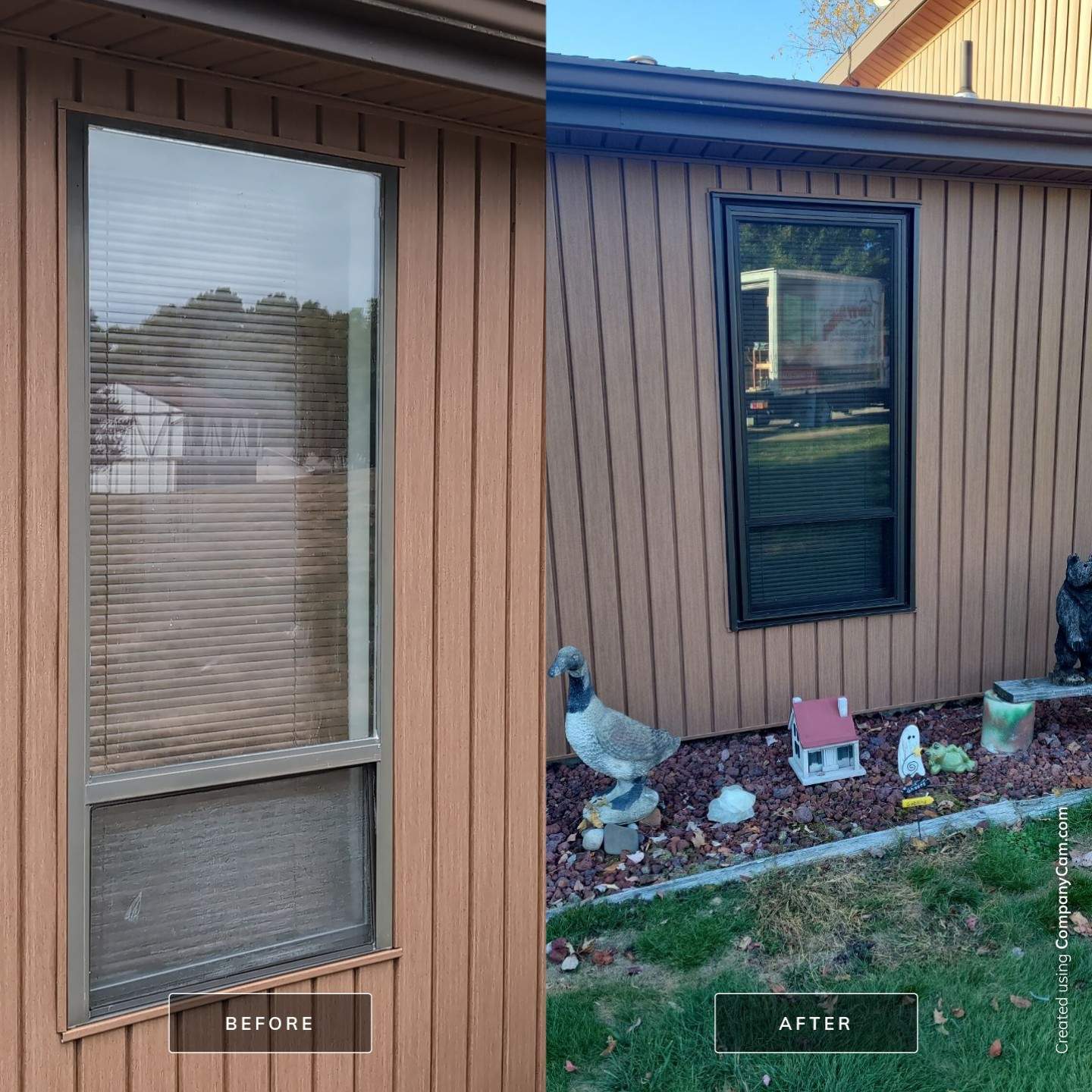
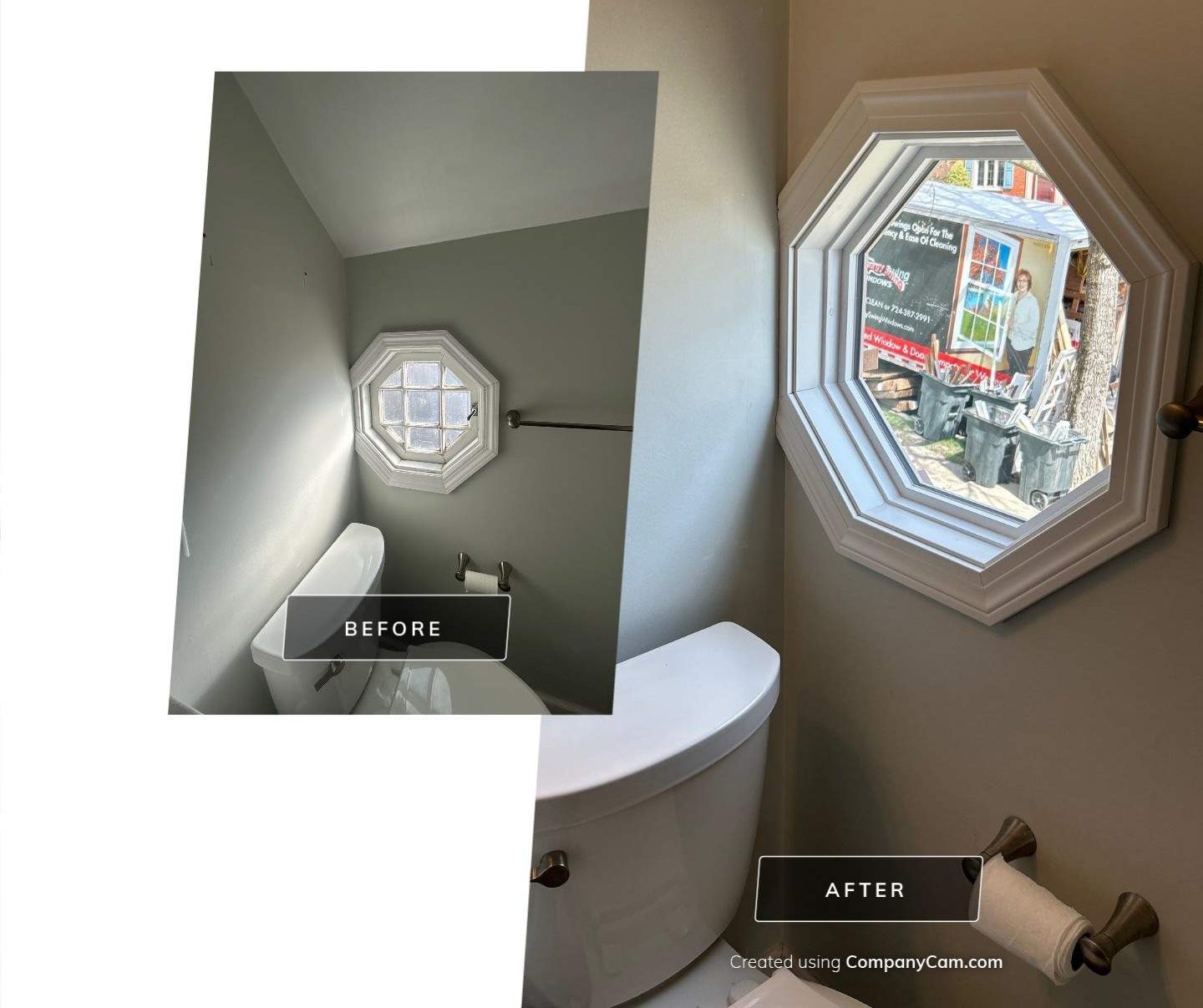
Pocket Window Replacement: A Faster, More Affordable Option?
A pocket replacement—also called an insert window—lets you keep the original window frame while replacing just the inner moving parts, like the sash and other components.
It’s a less invasive method that works best when the original wood frame is still in good shape and structurally sound.
Pocket installations are only an option if your home still has its original wood window frames. These are common in older Pittsburgh neighborhoods like Squirrel Hill, Mt. Lebanon, and Highland Park.
In historic homes, the charm of the original woodwork is often preserved, making a pocket replacement a viable solution.
However, if your home was built between the 80s and early 2000s with aluminum or vinyl windows—common in suburban areas like Cranberry, and South Fayette—a pocket installation typically isn’t possible. These window types usually require a full-frame replacement to ensure a proper fit and long-term performance.
When the conditions are right, a pocket replacement offers a quicker, cleaner installation. It retains the interior trim and minimizes disruption.
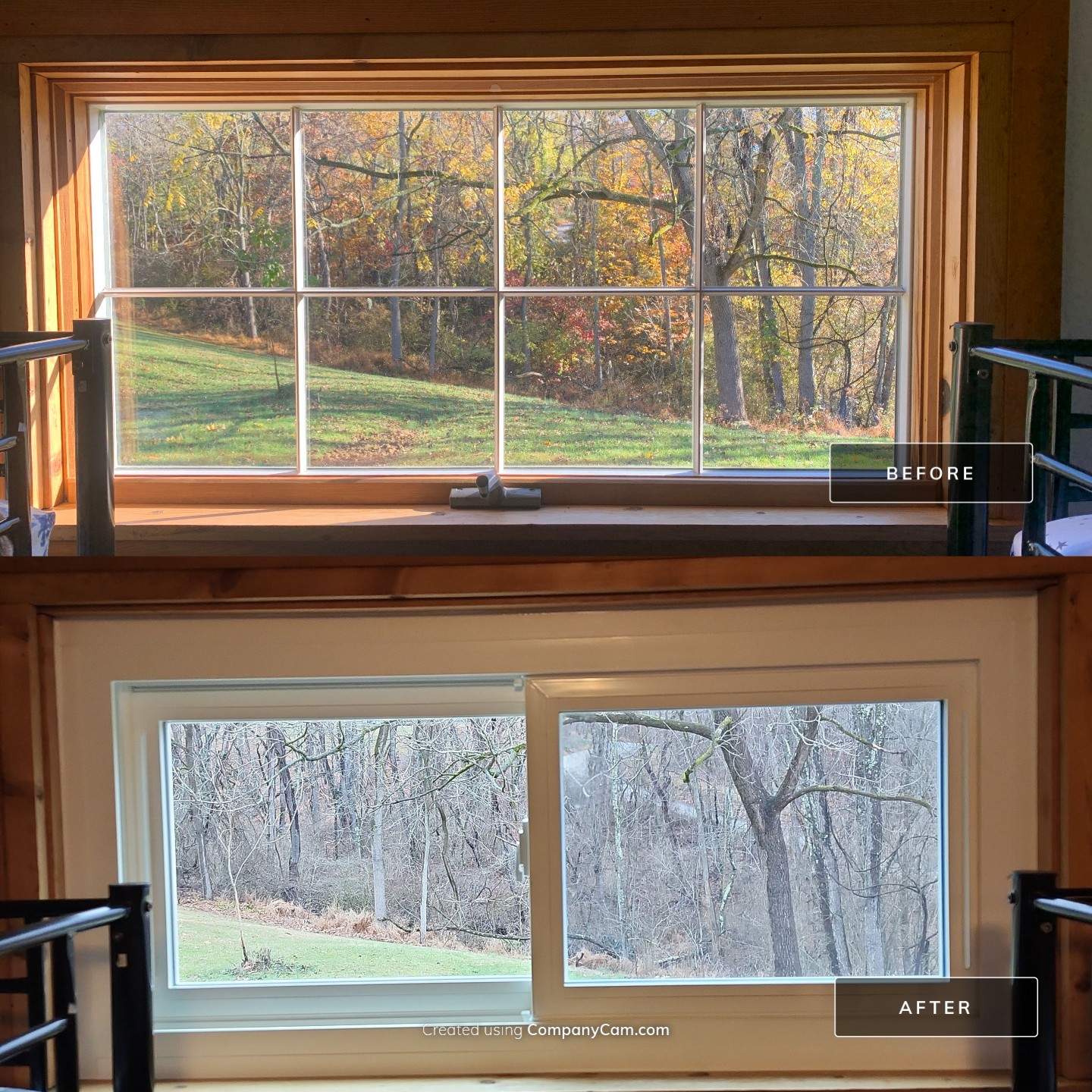
Why Homeowners Like Them:
- More cost-effective: If you can keep the existing frame, the materials and labor costs are $600-$1,000 lower per window than if it were a full frame replacement.
- Faster installation: It requires less work and disruption to the interior and exterior of your home. The installation can typically be completed in a day or less.
- Less disruption: No need to remove siding or trim, making it a cleaner process.
What You Need to Watch Out For:
- Not suitable for damaged frames: If your existing frame is rotted, warped, or inefficient, a pocket replacement won't fix underlying issues.
- Slightly reduced glass area: Since the new window fits within the old frame, you may lose a small amount of visible glass space.
- Limited flexibility: You must stick with the current size and style of your window.
Now that you know the factors that can affect your choice between an insert or full frame replacement, you probably want to know what the price of each job is going to be.
Full Frame vs. Insert Window Replacement: What’s the Cost Difference?
If you are replacing the original aluminum or vinyl windows, you do not have a pocket insert replacement option. The old frames must be totally removed. If the original wood window frame is still in place, you may have the option of a pocket insert or full frame removal.
Budget plays a significant role in choosing between full-frame and insert replacements. On average, a full-frame replacement typically costs $600 to $1,000 more per window than an insert replacement. Keep in mind, historic homes in Pittsburgh may have additional costs due to preservation requirements.
- Full-frame replacements do have a higher upfront cost. But, they may actually save you money long-term by improving energy efficiency and eliminating future repair costs. The high cost is because of the extra labor and interior trim work.
- Insert replacements are a more affordable solution upfront. Unfortunately, they may not address underlying structural issues or provide the same long-term efficiency benefits.
- Pittsburgh homes with historic details often need full-frame replacements that can be very costly. This is because historic neighborhoods require the windows and frames to be identical to their existing windows, to preserve the style.
- A minimal cost to be aware of a building permit. If your home is located within Pittsburgh city limits, a building permit can be required depending on the complexity of the project. These usually cost a few hundred dollars.
Consider what works best for your financial situation and long-term goals. Full-frame replacements may offer better insulation and durability.
Which Window Replacement Saves You More on Energy Bills?
Energy efficiency is crucial for Pittsburgh homeowners, given the city's cold winters and humid summers. If you live in an area where homes are historic, like Bloomfield or Mt. Lebanon, consider a few additional factors. The wall construction can be iffy when compared to modern homes. Meaning, existing insulation can be poor or non-existent. If energy savings are a top priority, full-frame replacements are often the better option, especially in old homes.
- Full-frame replacements provide better insulation because everything is replaced, sealing out old drafts.
- Pocket replacements help if replaced properly, but only if your existing frames and insulation are still in good shape.
Which Window Replacement Looks Best? Style Comparison
If you're looking to refresh the appearance of your home, both options have their advantages. Full-frame replacements allow for design flexibility, letting you change frame colors, styles, and sizes. Insert windows maintain existing trim and interior details but may slightly reduce the glass area. Your choice depends on how much of a visual change you want to make.
- Full-frame replacement allows for complete design flexibility
- Pocket insert installation keeps interior trim but glass size or visibility may be reduced.

Full frame replacement took this faded, wooden casement window into a bright white vinyl window.
Which Window Replacement Lasts Longer? Durability Breakdown
A major consideration for homeowners is durability. Full-frame replacements tend to last longer since they replace all components. Pocket insert replacements depend on the existing frame’s condition. Regular maintenance will extend the life of either option, but full-frame replacements generally provide greater longevity.
- Full-frame replacements last longer since they replace all components, eliminating potential problem areas.
- Pocket insert replacements depend on the existing frame’s condition. They may not last as long if the original structure deteriorates over time.
How Long Does Window Replacement Take? Full Frame vs. Insert
If you’re looking for a fast and simple upgrade, pocket insert replacements may be the best choice. However, if you’re planning a larger renovation, the extra time required for full-frame replacements may be worth it.
- Full-frame replacements of an existing wood window frame take longer due to the extensive work involved. A full-frame replacement takes between four to eight hours per window opening. Depending on the complexity of the opening, the time is divided between removing the old frame and applying the interior decorative trim.
- Pocket insert replacements are quicker projects and usually take two to four hours per opening from start to finish.
No matter the method you choose, the most ideal time to have your windows replaced in Pittsburgh is during the Spring or Fall. Both you and the installers won’t endure extreme temps of cold or heat. Keep in mind, to get this installation time, you must buy 3-4 months in advance.
Full Frame vs. Pocket Window Replacement: How to Choose the Right One
As previously mentioned, some window openings don’t have the option to be replaced with one method over the other. That is why it’s important to have a window expert evaluate them and make a plan based on your budget and style needs.
If you do have the option to choose, here are a few key factors to consider:
- Condition of your existing window frames: If they are in poor shape, a full frame replacement is likely necessary.
- Budget: If you're looking for a more affordable solution and your frames are still in good shape, pocket replacements can be a great choice.
- Aesthetic preferences: If you want a completely new look or larger windows, full frame replacement offers more flexibility.
- Long-term investment: If you plan to stay in your home for a long time, a full frame replacement of an old wood window frame may provide better energy efficiency and longevity.
Now that you understand the differences between full-frame and pocket window replacements, you’re in a much better position to make an informed decision. Whether you prioritize cost, energy efficiency, or long-term durability, the best option depends on the condition of your existing windows and your goals for your home.
If your original wooden window frames are still in great shape, a pocket replacement is a cost-effective and efficient option. But if your wood windows are outdated, or damaged, or you’re looking for a complete transformation, a full-frame replacement is the better investment.
Not sure which one is right for you? At Energy Swing Windows, we specialize in both options and can help you determine the best choice based on your budget and needs. Click here to schedule your free consultation and get expert advice on your windows!

